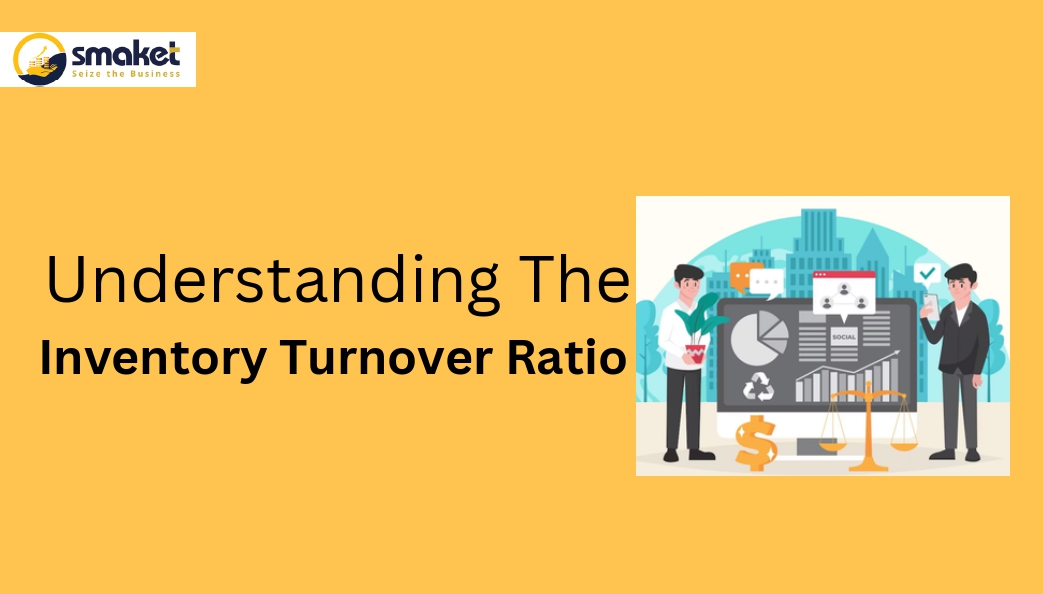The Inventory turnover ratio is an essential metric that measures how many times a corporation’s inventory is bought and replaced over a time frame. It is a key overall performance indicator that facilitates businesses to check their inventory control performance and the effectiveness of their income techniques. In this weblog publication, we will discover what the stock turnover ratio is, how it works, and its components.
What is Inventory Turnover Ratio?
A monetary metric called the stock turnover ratio, is applied to envision the frequency of stock substitute and also income inside a selected length for an enterprise. To calculate this ratio, the price of goods bought (COGS) is divided by the average stock held all through the equal length. The ratio suggests how efficiently a company is the usage of its stock to generate sales and cash waft.
How Does Inventory Turnover Ratio Work?
The ratio of inventory turnover measures the speed at which a company is dealing with its inventory and also replenishing it with fresh stock. When a company has an advanced inventory turnover ratio, then it also means that they’re dealing with its inventory at a faster ratio, performing in advanced cash flow and profitability. Again, a lower inventory turnover ratio suggests that a company is also holding onto its also inventory for longer ages, which can lead to advanced inventory costs and reduced profitability.
The formula for Inventory Turnover Ratio:
The formula for inventory turnover ratio is calculated by dividing the cost of goods vended by the average inventory. The cost of goods vended is also the total cost of all the goods vended during a period, including the cost of raw materials, labor, and above. The average inventory is the normal of the beginning and ending inventory levels during the same period.
Example Calculation
Let’s say that a company’s cost of goods sold is $500,000 and its average inventory is $100,000. Using the formula above, we can calculate its inventory turnover ratio as:
Inventory Turnover Ratio = $500,000 / $100,000
Inventory Turnover Ratio = 5
This means that the company is turning over its inventory five times per year.
Benefits of Inventory Turnover Ratio:
The inventory turnover ratio provides a number of benefits to companies, including:
Improved inventory management:
Efficiency improves by tracking inventory turnover and identifying management issues for faster replacement and also sales.
Better cash flow management:
A higher inventory turnover ratio indicates that a company is selling inventory faster, which can also lead to increased cash flow.
Increased profitability:
A higher inventory turnover ratio can lead to increased profitability by reducing inventory holding costs.
Improved sales strategies:
Companies can identify which products are selling well and adjust their sales strategies accordingly by measuring how quickly they are selling inventory.
Better decision-making:
The inventory turnover ratio informs when to order new inventory & how much to order, providing valuable insights for decision-making.
Conclusion:
The inventory turnover ratio is an important financial ratio that measures how quickly a company is selling its inventory and also replacing it with new inventory. By using this ratio, companies can improve their inventory management, cash flow, profitability, sales strategies, and also decision-making. To calculate the inventory turnover ratio, you also divide the cost of goods sold by the average inventory for the same duration using a formula.
FAQ:
1. What is inventory management?
Inventory management involves the systematic tracking and regulation of a company’s stock levels. It also includes tracking stock, ordering and purchasing inventory, and managing the supply chain to maintain optimal inventory levels.
2. Why is inventory management important?
Proper inventory management can prevent a business from experiencing financial losses due to overstocking or understocking. It can also help to improve cash flow and minimize holding costs while ensuring that popular items are always in stock.
3. What are the common inventory management ratios and formulas?
Common inventory ratios & formulas: COGS, inventory turnover, avg. inventory, sell-through ratio, days’ sale average, ending inventory, avg. stock level.
4. How do I calculate the inventory turnover ratio?
To calculate the inventory turnover ratio for a specific period, you also need to divide the cost of goods sold by the average inventory. A higher ratio indicates that the company is selling and replenishing its inventory more quickly.
5. Are there any new formulas or techniques for inventory management?
Yes, with advances in technology, businesses now have access to new inventory management techniques and also tools. CRM software streamlines customer interactions, allowing for better customer service, increased customer retention, and improved sales performance.

